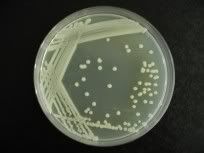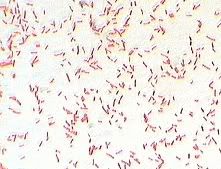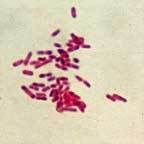Sex: Male
Age: 67 Years
Diagnosis: Urinnary Tract Infection (UTI)
INTRODUCTION OF UTI
A UTI is a common problem in the elderly and it is a condition where one or more structures in the urinary tract become infected after bacteria overcome its strong natural defenses. In spite of these defenses, UTIs are the most common of all infections and can occur at any time in the life of an individual. Almost 95% of cases of UTIs are caused by bacteria that typically multiply at the opening of the urethra and travel up to the bladder (known as the ascending route). Much less often, bacteria spread to the kidney from the bloodstream.
Bacterial UTIs can be classified according to localization as urethritis (urethra inflammation), cystitis (bladder infection), or pyelonephritis (kidney infection). In men, prostatitis may mimic or complicate UTI. Alternatively, UTI can be classified by the presence (symptomatic) or absence (asymptomatic) of symptoms, the frequency of its occurrence, the presence or absence of complications, and--especially important in the elderly--whether UTI is associated with catheter use.
The prevalence of UTI increases in both sexes with age; the female:male ratio is 2:1 in the elderly. The annual incidence of symptomatic bacterial UTIs is estimated to be as high as 10% in the elderly. However, because many of these infections are recurrent, the percentage of infected patients is lower. Asymptomatic bacteriuria is a common finding in the elderly, especially in women; the estimated cumulative prevalence is 30% in women and 10% in men.
More types of urinary pathogens are isolated from elderly patients with UTI than from younger patients. The severity of any functional disability, nature of underlying illnesses, presence of anatomic or physiologic abnormalities of the genitourinary (GU) tract, and use of indwelling bladder catheters determine the types of organisms and chronicity of bacteriuria.
In the elderly, the female/male ratio of incidence in UTIs narrows, in part because elderly men often have bladder outlet obstruction due to benign prostatic hyperplasia. Additionally, the relative reduction in the incidence of UTI in elderly women may be due to a decrease in sexual activity, which can introduce bacteria into the bladder.
All UTIs in men are considered complicated whether or not these factors exist.
Source:http://www.merck.com/mrkshared/mmg/sec12/ch100/ch100a.jsp
POSSIBLE CAUSATIVE MICRO-ORGANISMS
(a) Escherichia coli
The following images show the growth of E.Coli

Source:http://images.google.com.sg/imgres?
(b) Klebsiella sp, especially K. pneumoniae, are the second most commonly isolated gram-negative, aerobic pathogens.
Below are images of K. pneumoniae


The following show the pictures of Proteus mirabilis
(d) Proteus sp, M. morganii, and Providencia sp are commonly isolated from patients who are chronically catheterized.
(e) Serratia, Enterobacter, Citrobacter, Acinetobacter, and Pseudomonas sp are isolated mainly from patients with nosocomial UTIs.
(f) Rare bacterial causes of UTIs include ureaplasma urealyticum and Mycoplasma hominis, which are generally harmless organisms.
PROCEDURES
(a) Urinalysis
Urinalysis involves a physical and chemical examination of urine. In addition, the urine is spun in a centrifuge to allow sediments containing blood cells, bacteria, and other particles to collect. This sediment is then examined under a microscope. A urinalysis, then, offers a number of valuable clues for an accurate diagnosis:
- Simply observing the urine for color and cloudiness can be important.
- Acidity is measured.
- White blood cells (leukocytes) are counted. A high count in the urine is referred to as pyuria. (A leukocyte count over 10 per microliter is considered to indicate pyuria.) This is very accurate in identifying the disease when it's present, but it also tests positive in many people who do not have a UTI. Pyuria is usually sufficient for a diagnosis of UTI in nonhospitalized patients if other standard symptoms (or just fever in small children) are also present.
Treatment can be started without the need for further tests if the following urinalysis results are present in patients with symptoms and signs of UTIs:
- A high white cell count.
- Cloudy urine.
(b) Urine Culture
Urine culture uses a urine specimen that is placed on an agar plate, then incubated in the laboratory for 24 to 48 hours. It is then examined for the presence of bacterial growth. UTI is nearly always caused by a single species of bacteria, notably E. coli. Cultures have limitations, however. If a mix of different species is found, the test is considered contaminated and is redone. In addition, even if E. coli is identified, researchers are also looking for variants of this bacteria. Certain types may indicate a higher risk for a second infection, while others may even be protective against recurring infections. Furthermore, some organisms, such as Chlamydia, which is a sexually transmitted organism, may not be detected.
Even if bacteria are present in the culture, a diagnosis of UTI depends on symptoms and gender.
If the presence of other micro-organisms other than E. coli are suspected, a Gram stain is used to help predict the species, which can be either gram-positive or gram-negative. Following this, the shape of the organism can be identified, be it cocci or bacilli, and this helps to determine the specific biochemical tests to be done so as to detect the precence of enzymes. These biochemical tests may include the catalase and oxidase tests. Last but not the least, an antibiotic sensitivity test is done.
Escherichia coli is gram negative and the most common cause of UTIs.
Source: http://healthydevil.studentaffairs.duke.edu/index.html> Health Topics> Urinary Tract Infection In Men



No comments:
Post a Comment